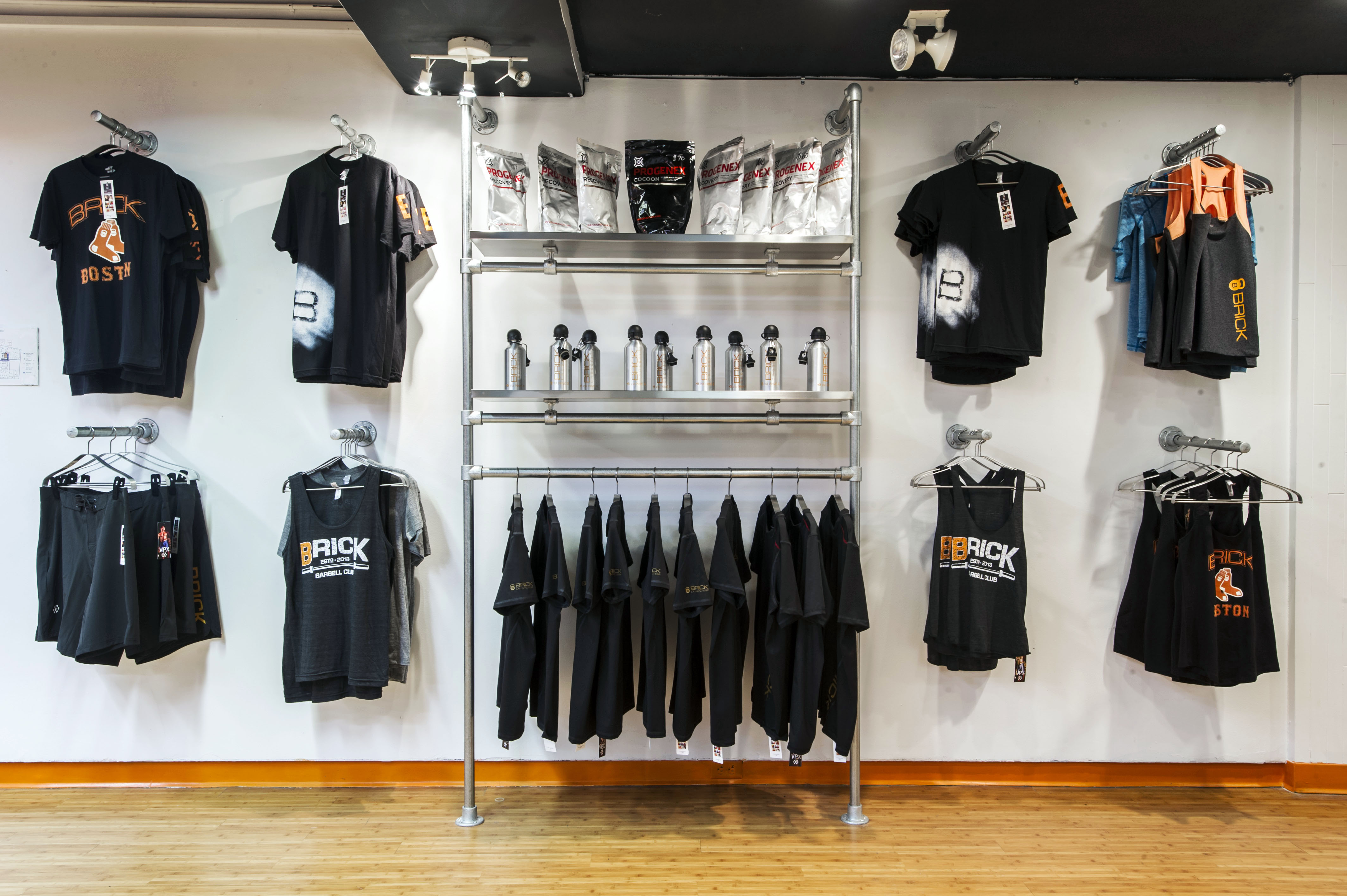Creative displays are a powerful marketing tool that can capture attention, engage audiences, and drive conversions. In this comprehensive guide, we’ll delve into the world of creative displays, exploring their types, design principles, production techniques, and measurement strategies. Get ready to unlock the potential of creative displays and elevate your marketing game.
Introduction

Creative displays are visual representations of a brand or product designed to capture attention and convey a message. They play a crucial role in marketing by creating a lasting impression on customers, enhancing brand awareness, and driving sales.
The benefits of utilizing creative displays for brand awareness include:
- Increased visibility and recognition
- Enhanced brand perception and recall
- Improved customer engagement and interaction
Real-World Examples of Effective Creative Displays
Here are some real-world examples of effective creative displays and their impact:
- Nike’s “Find Your Greatness” Campaign:This campaign featured interactive displays in retail stores that allowed customers to experience the brand’s products and connect with its message. The displays resulted in a significant increase in brand awareness and sales.
- Apple’s “Think Different” Campaign:Apple’s iconic advertising campaign featured visually stunning and thought-provoking displays that showcased the brand’s innovative products and values. The campaign helped to establish Apple as a leader in the tech industry and contributed to its success.
Types of Creative Displays

Creative displays come in a variety of formats, each with its own strengths and weaknesses. The choice of format depends on the specific objectives of the campaign, the target audience, and the available resources.
Some of the most common creative display formats include:
Banners
- Banners are rectangular images or animations that are placed on websites and other online platforms.
- They are a cost-effective way to reach a large audience, but they can be difficult to make stand out from the clutter.
Rich Media Ads
- Rich media ads are interactive ads that include features such as video, audio, and animation.
- They are more engaging than traditional banners, but they can be more expensive to produce.
Native Ads
- Native ads are ads that are designed to blend in with the surrounding content.
- They are less intrusive than traditional ads, but they can be more difficult to create.
Video Ads
- Video ads are short videos that are played on websites and other online platforms.
- They are a great way to capture attention and convey a message, but they can be expensive to produce.
Display Size and Placement
The size and placement of a creative display can also have a significant impact on its effectiveness.
Larger displays are more likely to be noticed, but they can also be more expensive. Smaller displays are less expensive, but they may be less effective at capturing attention.
The placement of a display is also important. Displays that are placed in high-traffic areas are more likely to be seen, but they may also be more expensive.
Design Elements

Visual hierarchy and color theory play a pivotal role in creating visually appealing and engaging creative displays. By carefully arranging elements and utilizing colors, you can guide the viewer’s eye and convey important information effectively.
To achieve a visually pleasing display, consider the following best practices:
Using High-Quality Images and Graphics
- Incorporate high-resolution images that are sharp and relevant to the display’s message.
- Use graphics to enhance the visual appeal and simplify complex concepts.
Choosing Appropriate Fonts and Typefaces
- Select fonts that are easy to read and visually appealing.
- Use a limited number of fonts to maintain consistency.
Creating a Consistent and Cohesive Design
- Establish a consistent color scheme and typography throughout the display.
- Use white space effectively to create visual breathing room.
Optimizing Display Designs for Different Platforms and Devices
- Consider the screen size and resolution of the target devices.
- Use responsive design techniques to ensure the display adapts to various screen sizes.
- Optimize for different browsers and operating systems to ensure cross-platform compatibility.
Interactive Elements

Interactive elements can enhance the user experience of creative displays by allowing viewers to engage with the content in a meaningful way. By incorporating interactivity, brands can create memorable and immersive experiences that leave a lasting impression on their audience.There are numerous benefits to incorporating interactivity into creative displays.
Interactive elements can:
Increase engagement
By allowing viewers to interact with the display, you can capture their attention and encourage them to spend more time with your content.
Enhance brand recall
Interactive displays are more likely to be remembered by viewers than static displays, as they create a more memorable and engaging experience.
Generate leads
Interactive elements can be used to collect leads from potential customers, such as email addresses or phone numbers.
Drive sales
Interactive displays can be used to drive sales by providing viewers with a direct way to purchase products or services.However, there are also some challenges to incorporating interactivity into creative displays. These challenges include:
Cost
Interactive displays can be more expensive to produce than static displays.
Technical complexity
Interactive displays can be technically complex to develop and implement.
Maintenance
Interactive displays may require ongoing maintenance to ensure that they are functioning properly.Despite these challenges, the benefits of incorporating interactivity into creative displays can often outweigh the costs. By carefully planning and executing your interactive display campaign, you can create a memorable and engaging experience that will leave a lasting impression on your audience.
Examples of Successful Interactive Display Campaigns
There are many examples of successful interactive display campaigns that have been used to achieve a variety of marketing goals. Here are a few examples:
Nike
Nike’s “FuelBand” display allowed users to interact with a digital version of the FuelBand and track their progress towards their fitness goals.
Coca-Cola
Coca-Cola’s “Share a Coke” display allowed users to create personalized bottles of Coke with their own names or messages.
McDonald’s
McDonald’s “Create Your Taste” display allowed users to create their own custom burgers.These are just a few examples of how interactive elements can be used to create successful creative display campaigns. By incorporating interactivity into your displays, you can create a more engaging and memorable experience for your audience.
Measurement and Analytics

Evaluating the success of your creative displays is crucial for optimization and maximizing ROI. Key metrics to track include:
- Impressions:Number of times the ad is displayed.
- Clicks:Number of times users interact with the ad.
- Click-through rate (CTR):Percentage of impressions that result in clicks.
- Conversion rate:Percentage of clicks that lead to desired actions (e.g., purchases).
- Engagement:Metrics like time spent on ad, scroll depth, and interactions.
Tracking and Analyzing Data
Use analytics tools (e.g., Google Analytics, Adobe Analytics) to track and analyze display performance. Monitor key metrics over time to identify trends and patterns.
Optimizing Campaigns
Analyze data to identify areas for improvement. For example, if CTR is low, consider adjusting ad copy or targeting. If conversion rate is low, optimize landing pages or refine audience segmentation.
Best Practices

Adhering to proven best practices is crucial for the success of your creative display campaigns. These guidelines will help you create visually appealing, engaging, and effective ads that resonate with your target audience.
To ensure your campaigns are impactful, avoid common pitfalls and draw inspiration from successful strategies. Staying abreast of industry trends will keep your approach fresh and relevant.
Common Pitfalls, Creative display
- Neglecting to define clear campaign goals and target audience
- Creating ads that are visually cluttered or overwhelming
- Using low-quality images or graphics that detract from the ad’s message
- Failing to optimize ads for different devices and screen sizes
- Ignoring the importance of effective copywriting
Lessons from Successful Campaigns
- Focus on delivering a clear and concise message
- Use eye-catching visuals that align with the brand’s identity
- Incorporate interactive elements to enhance user engagement
- Optimize ads for specific target audiences and placements
- Continuously monitor and analyze campaign performance to make data-driven adjustments
Staying Up-to-Date
- Attend industry conferences and webinars
- Subscribe to industry publications and blogs
- Follow thought leaders and influencers on social media
- Experiment with new ad formats and technologies
- Seek inspiration from award-winning campaigns
Case Studies

By analyzing successful creative display campaigns, we can learn valuable lessons that can be applied to our own campaigns. These case studies provide insights into the strategies, tactics, and results of effective creative display campaigns.
In this section, we will share case studies of successful creative display campaigns, analyze their strategies, tactics, and results, and discuss the lessons that can be learned from these case studies.
Case Study 1: Nike “Find Your Greatness”
- Strategy:Nike used a combination of dynamic creative, targeted messaging, and retargeting to reach its target audience.
- Tactics:Nike created a series of creative display ads that featured inspiring images and videos of athletes, along with personalized messages that encouraged viewers to “Find Your Greatness.”
- Results:The campaign resulted in a significant increase in brand awareness and engagement, as well as a lift in sales.
Case Study 2: Airbnb “Live There”
- Strategy:Airbnb used a combination of immersive creative, interactive elements, and social media to drive bookings.
- Tactics:Airbnb created a series of interactive display ads that allowed viewers to explore different Airbnb listings, as well as a social media campaign that encouraged users to share their own travel experiences.
- Results:The campaign resulted in a significant increase in bookings, as well as a boost in brand awareness and engagement.
Emerging Trends
The realm of creative display advertising is in a state of constant evolution, with the emergence of groundbreaking trends that are reshaping the industry. These trends offer a wealth of opportunities for businesses to enhance the effectiveness of their campaigns and forge deeper connections with their target audiences.
Among the most notable trends driving the industry forward are data-driven personalization, programmatic ad buying, native advertising, video advertising, and mobile advertising.
Data-driven Personalization
Data-driven personalization empowers advertisers to tailor their ads to the specific preferences and behaviors of each individual consumer. By leveraging data from various sources, such as website visits, social media interactions, and purchase history, advertisers can create highly targeted ads that resonate deeply with their intended audience.
Programmatic Ad Buying
Programmatic ad buying involves the use of automated systems to purchase and optimize ad placements across various digital channels. This approach streamlines the ad buying process, enabling advertisers to reach their target audience more efficiently and cost-effectively.
Native Advertising
Native advertising seamlessly blends into the content of the platform on which it is displayed, creating a less intrusive and more engaging experience for users. By aligning the ad’s format and style with the surrounding content, native advertising can effectively capture the attention of consumers without disrupting their browsing experience.
Video Advertising
Video advertising has emerged as a powerful medium for capturing the attention of consumers and conveying complex messages in a visually appealing manner. The rise of video platforms like YouTube and TikTok has provided advertisers with new avenues to reach their target audience through engaging and shareable video content.
Mobile Advertising
The widespread adoption of smartphones and tablets has made mobile advertising an essential component of any comprehensive marketing strategy. Mobile advertising allows businesses to reach consumers on the go, providing them with targeted ads that are tailored to their mobile usage patterns.
These emerging trends are not merely passing fads but rather fundamental shifts that are transforming the way creative display advertising is conducted. By leveraging these trends, businesses can gain a competitive edge, enhance the effectiveness of their campaigns, and drive meaningful results.
Tools and Resources

Creating and managing creative displays can be a daunting task, but there are a number of tools and resources available to help you get the job done. These tools can help you with everything from designing your displays to tracking their performance.
Here are a few of the most popular tools and resources for creative displays:
Design Tools
- Adobe Creative Suite:A comprehensive suite of design tools that includes Photoshop, Illustrator, InDesign, and After Effects. These tools can be used to create a wide variety of creative displays, from simple images to complex animations.
- Canva:A free online design tool that makes it easy to create beautiful visuals. Canva offers a wide range of templates and tools that can be used to create social media graphics, presentations, and more.
- Visme:An online design tool that offers a wide range of features for creating interactive presentations, infographics, and other visual content.
Management Tools
- Google Display & Video 360:A comprehensive platform for managing display and video campaigns. Google Display & Video 360 allows you to create, target, and track your campaigns across a variety of platforms.
- Sizmek:A leading provider of programmatic advertising solutions. Sizmek offers a range of tools for managing display campaigns, including audience targeting, ad serving, and analytics.
- The Trade Desk:A cloud-based platform for managing programmatic advertising campaigns. The Trade Desk offers a range of features for targeting, bidding, and optimization.
Advantages and Disadvantages
Using tools and resources for creative displays can offer a number of advantages, including:
- Increased efficiency:Tools can help you automate tasks and streamline your workflow, freeing up time to focus on more creative aspects of your work.
- Improved quality:Tools can help you create high-quality creative displays that are visually appealing and effective.
- Greater reach:Tools can help you distribute your creative displays across a wider audience.
However, there are also some disadvantages to using tools and resources for creative displays, including:
- Cost:Some tools can be expensive, especially if you need to purchase a subscription or license.
- Learning curve:Some tools can have a steep learning curve, which can be time-consuming to overcome.
- Limited flexibility:Some tools may not offer the flexibility you need to create the exact display you want.
Legal Considerations
Creative display advertising must adhere to legal considerations to avoid copyright infringement, trademark violations, and other potential risks.
Understanding copyright and trademark laws is crucial. Copyright protects original works such as images, videos, and music, while trademarks safeguard unique identifiers like brand names and logos.
Copyright and Trademark Laws
- Obtain permission or license to use copyrighted material.
- Respect trademarks by not using them without authorization.
- Create original content to avoid copyright issues.
Risks and Liabilities
- Copyright infringement can lead to lawsuits and financial penalties.
- Trademark violations can result in cease-and-desist orders and reputational damage.
- False or misleading advertising can attract legal consequences.
Ethical Considerations

In the realm of creative display advertising, ethical considerations hold paramount importance. Respecting user privacy, avoiding deceptive practices, and adhering to industry regulations are crucial for maintaining consumer trust and ensuring responsible advertising.
Privacy and Transparency
- Obtain consent before collecting or using personal data for ad targeting.
- Provide clear and accessible privacy policies outlining data collection practices.
- Avoid using intrusive tracking technologies or collecting sensitive information without consent.
Deceptive Practices
- Avoid using misleading or exaggerated claims in ad copy or visuals.
- Disclose any material connections or affiliations with the advertised product or service.
- Ensure that ads are easily distinguishable from editorial content.
Cultural Sensitivities and Diversity
- Be mindful of cultural nuances and avoid stereotypes or offensive content.
- Represent diversity in ad imagery and messaging to reflect the target audience.
- Consider the cultural context of the target market and adapt campaigns accordingly.
Impact on Children and Vulnerable Populations
- Follow industry guidelines and regulations regarding advertising to children.
- Avoid using manipulative or deceptive tactics to target vulnerable populations.
- Promote responsible consumption and avoid promoting products that may be harmful to children or vulnerable individuals.
Ethical Case Studies
- Example of Ethical Campaign:Dove’s “Real Beauty” campaign promoted diversity and body positivity, empowering women with realistic body images.
- Example of Unethical Campaign:A pharmaceutical company’s ad exaggerated the effectiveness of a medication, potentially misleading patients about its benefits.
Industry Regulations and Self-Regulation
- Adhere to industry guidelines and regulations established by organizations like the Interactive Advertising Bureau (IAB).
- Participate in self-regulation initiatives to ensure ethical advertising practices.
- Collaborate with industry peers to promote responsible and ethical advertising standards.
Cross-Channel Integration

Cross-channel integration is crucial for maximizing brand reach and engagement by seamlessly connecting creative displays with other marketing channels. It ensures a cohesive brand experience across multiple platforms, reinforcing messaging and enhancing the overall customer journey.
Benefits of Cross-Channel Integration
- Increased brand reach and visibility
- Improved customer engagement and loyalty
- Enhanced brand consistency and messaging
- Optimized campaign performance and ROI
Challenges of Cross-Channel Integration
- Coordination and consistency across multiple platforms
- Managing different formats and content requirements
- Tracking and measuring campaign performance
Examples of Successful Cross-Channel Campaigns
- Nike’s “Find Your Greatness” campaign integrated creative displays, social media, and mobile apps to inspire athletes and promote the brand.
- Starbucks’ “Red Cup” campaign utilized creative displays in stores, social media, and email marketing to create a festive holiday experience.
Measuring the Effectiveness of Cross-Channel Integration
Key metrics and KPIs to measure cross-channel integration efforts include:
- Website traffic and conversions
- Social media engagement and reach
- Email open rates and click-through rates
- Sales and revenue generated
Best Practices for Cross-Channel Integration
- Develop a comprehensive cross-channel strategy
- Ensure consistency in messaging and branding
- Optimize creative displays for each channel
- Track and analyze campaign performance regularly
Future of Creative Display

The future of creative display advertising holds exciting possibilities as new technologies and emerging trends reshape the industry. Here are some predictions:
Increased personalization and targeting
Creative display is a great way to showcase your work and make a statement. If you’re looking for the perfect Christmas gift for a creative person, check out our list of christmas gifts for creatives. We’ve got everything from art supplies to tech gadgets, so you’re sure to find something they’ll love.
And with our free gift wrapping, you can be sure that your gift will arrive in style.
Advanced AI and machine learning algorithms will enable more precise targeting and personalized ad experiences, catering to individual preferences and behaviors.
Immersive and interactive formats
Augmented reality (AR) and virtual reality (VR) will enhance creative displays, creating immersive and interactive experiences that engage users and drive conversions.
Programmatic automation
Automation will streamline creative display campaigns, optimizing ad performance, reducing manual effort, and freeing up marketers for strategic initiatives.
Cross-channel integration
Creative displays will seamlessly integrate with other marketing channels, providing a cohesive and consistent brand experience across all touchpoints.
Measurement and analytics advancements
Sophisticated analytics tools will provide granular insights into campaign performance, enabling marketers to make data-driven decisions and optimize ROI.
Preparing for the Future
To prepare for the future of creative display, consider the following strategies:
Embrace emerging technologies
Explore and experiment with new technologies like AR and VR to enhance your creative displays and engage audiences in innovative ways.
Invest in personalization
Leverage data and technology to personalize ad experiences and deliver relevant content that resonates with individual users.
Automate and optimize
Utilize programmatic automation to streamline your campaigns, improve performance, and maximize ROI.
Focus on cross-channel integration
Create a cohesive brand experience across all channels, ensuring consistency and maximizing impact.
Monitor and analyze performance
Track key metrics and use analytics to identify areas for improvement and make informed decisions about your creative display campaigns.
Conclusion

In conclusion, creative displays have become indispensable in modern marketing, offering a powerful way to captivate audiences, drive engagement, and generate conversions. By leveraging the principles discussed in this article, marketers can create impactful creative displays that resonate with their target audience and achieve their marketing goals.
From capturing attention to engaging audiences and driving conversions, creative displays play a crucial role in the success of any marketing campaign. By incorporating design elements, interactive elements, and measurement and analytics, marketers can create effective creative displays that deliver tangible results.
- Explore industry trends, best practices, and success stories to stay ahead of the curve.
- Analyze successful creative display campaigns to learn from their strategies and tactics.
- Subscribe to our newsletter for the latest insights and updates on creative display advertising.
- Join our upcoming webinar to learn from industry experts and gain hands-on experience.
- Access our free guide on creative display advertising for a comprehensive overview of the topic.
Question & Answer Hub: Creative Display
What are the key benefits of using creative displays?
Creative displays offer numerous benefits, including increased brand awareness, enhanced customer engagement, improved sales conversions, and the ability to convey complex messages in a visually appealing manner.
How can I measure the effectiveness of my creative displays?
To measure the effectiveness of your creative displays, track key metrics such as foot traffic, sales conversions, website visits, and social media engagement. Use analytics tools to gather data and optimize your displays for maximum impact.
What are some common mistakes to avoid when creating creative displays?
Common mistakes to avoid include using low-quality images, overcrowding your display with too much information, and failing to consider your target audience. Always prioritize clarity, visual appeal, and relevance to your marketing goals.